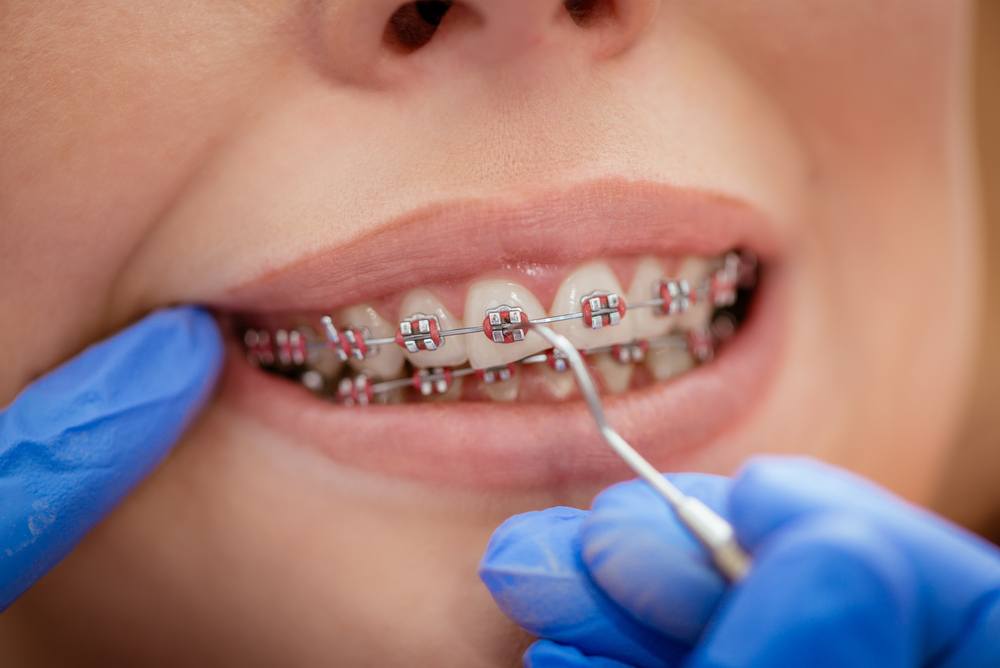Discovering the Right Cumming Orthodontist for Your Braces and Aligners Needs
Discovering the Right Cumming Orthodontist for Your Braces and Aligners Needs
Blog Article
Comprehensive Guide to Orthodontics Treatments for Fixing Oral Misalignments
In the world of orthodontics, the trip to accomplishing a perfectly straightened smile includes a myriad of procedures tailored to remedy dental imbalances. From conventional dental braces to unseen aligners and even medical choices, the area of orthodontics uses a series of solutions to attend to varying levels of dental irregularities. Comprehending the details of each procedure, including their systems, advantages, and potential drawbacks, is critical in making informed decisions concerning one's orthodontic therapy. As we navigate with the thorough guide to orthodontic procedures for remedying oral misalignments, the elaborate information of each approach will unfold, dropping light on the course towards a practical and unified oral alignment.
Orthodontic Procedures Overview

Normal modifications and surveillance are vital parts of orthodontic therapy to guarantee progression is on track and to make any type of essential modifications along the means. By going through orthodontic treatments, clients can not just accomplish a straighter smile yet also boost their overall oral health and wellness and function.
Typical Braces: Exactly How They Work
When taking into consideration orthodontic therapies for dental misalignments, traditional braces stand apart as a time-tested technique for fixing teeth positioning. Typical dental braces include brackets, wires, and bands that function together to apply continual stress on the teeth, slowly moving them into the wanted placement. The brackets are attached to the teeth making use of a special adhesive, and the wires are threaded via the brackets. By adjusting the stress of the cables, orthodontists can control the instructions and force put on each tooth, assisting them into correct positioning over time.
One key aspect of just how conventional dental braces job is the process of bone renovation. As pressure is put on the teeth with the braces, the bone surrounding the teeth is reshaped to sustain the new tooth settings. This renovation is vital for the long-lasting stability of the fixed placement. Clients will certainly need routine modifications at the orthodontist's workplace to make sure the braces proceed to apply the right stress for efficient teeth movement.
Unseen Aligners: Disadvantages and pros
Undetectable aligners use a convenient and very discreet option to conventional braces for remedying oral imbalances. These clear, personalized trays are virtually unnoticeable when used, making them an attractive choice for individuals looking for an extra cosmetically pleasing orthodontic therapy. Among the key benefits of unseen aligners is their removability, enabling less complicated upkeep of dental health compared to conventional braces. Individuals can eliminate the aligners before eating or brushing their teeth, minimizing the threat of food obtaining stuck in the device and streamlining the cleansing process.

Surgical Orthodontic Options
Surgical interventions in orthodontics present feasible options for dealing with complicated oral imbalances that may not be efficiently settled through traditional orthodontic therapies. While invisible aligners and conventional dental braces can deal with many orthodontic problems, certain cases require medical treatment to achieve ideal outcomes. Surgical orthodontic choices are usually recommended for extreme malocclusions, considerable jaw discrepancies, and cases where the underlying bone framework needs modification to attain appropriate positioning.
One common medical orthodontic treatment is orthognathic surgical procedure, which involves repositioning the jaws to deal with useful concerns such as difficulty eating or talking. This surgery is commonly carried out in collaboration with an orthodontist that assists line up the teeth prior to and after the procedure. Surgical orthodontics may additionally involve procedures to subject influenced teeth, remove excess periodontal cells, or improve the jawbone to develop an extra unified face account.
Prior to considering surgical orthodontic options, patients undertake a comprehensive assessment to identify the necessity and possible benefits of such interventions. braces. While surgery might seem complicated, it can considerably improve both the feature and visual appeals of the smile in instances where standard orthodontic therapies fall short
Retainers and Post-Treatment Care

Post-treatment care entails following the orthodontist's guidelines vigilantly. This might include appropriate oral health practices, going to follow-up consultations, and wearing the retainers as suggested. Failure to adhere to post-treatment treatment instructions can cause relapse, where the teeth progressively return in the direction of their original settings. Regular retainer wear, good oral health, and normal dental examinations find out here now are essential for preserving the outcomes achieved with orthodontic surgical procedure and guaranteeing the long-lasting security of the corrected dental placement.
Final Thought
In conclusion, orthodontic treatments supply different alternatives for remedying oral misalignments. Standard dental braces use metal brackets and wires to shift teeth into correct alignment. Unnoticeable aligners provide an even more discreet choice but might not appropriate for all instances. Surgical orthodontic options are offered for extra serious imbalances. Retainers are frequently utilized post-treatment to keep the new placement. In general, orthodontic treatments can effectively enhance oral wellness and aesthetic appearance.
As we browse through the thorough guide to orthodontic treatments for remedying dental imbalances, the elaborate details of each technique will unravel, shedding light on the course toward a useful and unified dental positioning. - cumming aligners
One of the most typical orthodontic treatments is the usage of braces, which are composed of metal brackets and cables that use gentle pressure to slowly shift teeth into the wanted setting.When considering orthodontic therapies for dental imbalances, conventional dental braces stand out as a tried and true method for correcting teeth placing. Additionally, unnoticeable aligners may not be ideal for complex orthodontic problems that need more considerable teeth movement, as they are usually recommended for light to modest cases. Retainers are custom-made orthodontic tools developed to hold teeth in their dealt with settings after the conclusion of orthodontic therapy.
Report this page